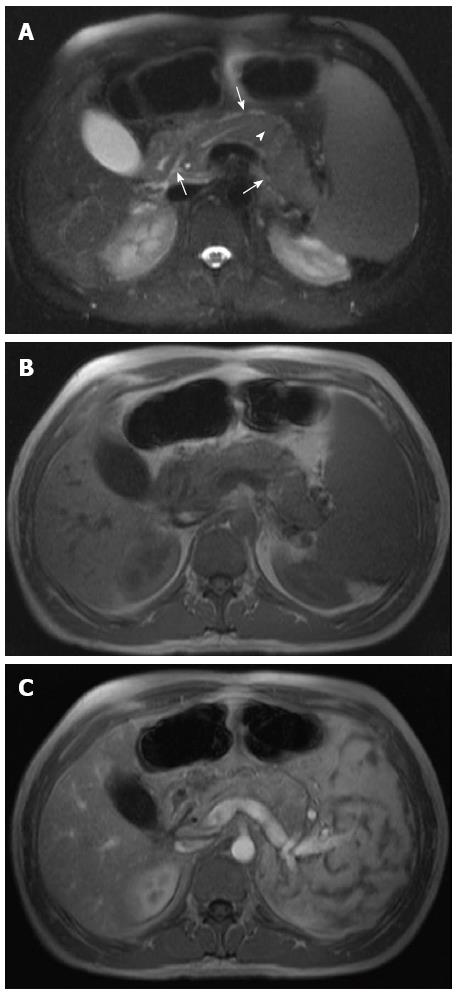Copyright
©2014 Baishideng Publishing Group Inc.
World J Gastroenterol. Oct 28, 2014; 20(40): 14760-14777
Published online Oct 28, 2014. doi: 10.3748/wjg.v20.i40.14760
Published online Oct 28, 2014. doi: 10.3748/wjg.v20.i40.14760
Figure 3 Mild acute interstitial edematous pancreatitis.
A: Axial single-shot turbo spin-echo T2-weighted (HASTE) image; B: Axial pre-contrast 3D-GRE T1-weighted images with fat-suppression; C: Axial post-Gadolinium 3D-GRE T1-weighted images with fat-suppression during the hepatic arterial-dominant phases. There is mild lace-like increased T2 signal involving the pancreatic parenchyma, associated with effacement of the distal pancreatic duct (arrowhead), due to surrounding edema, and minimal amount of peripancreatic fluid around (arrows) the head and body (A). The pancreas demonstrates mildly enlarged distal body and tail (A-C); with diffuse minimally decreased T1 signal intensity (B); and mild heterogeneous enhancement of the distal body and tail on the hepatic arterial-dominant phase (C) in keeping with diffuse edematous pancreatitis.
- Citation: Manikkavasakar S, AlObaidy M, Busireddy KK, Ramalho M, Nilmini V, Alagiyawanna M, Semelka RC. Magnetic resonance imaging of pancreatitis: An update. World J Gastroenterol 2014; 20(40): 14760-14777
- URL: https://www.wjgnet.com/1007-9327/full/v20/i40/14760.htm
- DOI: https://dx.doi.org/10.3748/wjg.v20.i40.14760









